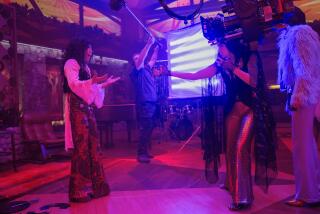Story of Salem still has the power to bewitch
- Share via
More than three centuries later, the story of the Salem witch trials remains as disturbing as ever. Twenty innocent people lost their lives during a year of terror, when a Colonial culture of shame and fear spawned mass hysteria.
Those of us who only know the story from grudgingly reading Arthur Miller’s classic play “The Crucible” in high school may be intrigued by “Salem Witch Trials,” a two-part movie (9 p.m. Sunday and Tuesday on CBS) that purports to be a more accurate retelling of events.
This version has its bewitching moments, but no thanks to a bewildering casting choice. The crafty comic actress Kirstie Alley seems out of place as one of the main accusers behind the village witch hunt, and the arc her character ultimately takes is less than convincing.
Part one starts on a winter night in Salem, Mass., in 1691 when two tragedies strike: A barn is leveled by fire, and Ann Putnam (Alley) delivers a stillborn baby as her daughter, Annie (Katie Boland), watches in horror. When Ann’s husband, the vindictive Thomas Putnam (Jay O. Sanders), learns of the loss, he and his friend, the Rev. Samuel Parris (Henry Czerny), wonder if the events were caused by “a dark force” within the community.
Months later, when Annie and several other girls suddenly seem to fall into demonic fits, the adults are too quick to believe their explanation: that they have become “afflicted” by witches living within the community. Parris and the supercilious prosecutor William Stoughton (Peter Ustinov) set out to purge the town of evil, and soon no one is beyond suspicion.
In part two, when the devout elder Rebecca Nurse (Shirley MacLaine) falls prey to Ann’s accusations, doubts about the validity of the witch hunt finally start to take hold.
Despite its flaws, “Salem Witch Trials” has a mysterious pull that stems in part from the ambiguity of the girls’ motives. Director Joseph Sargent and writer Maria Nation vividly evoke the harshness of 17th century New England, and the themes of religious persecution and the dangerous power of distrust have, sadly, lost no relevance in today’s world.
More to Read
Only good movies
Get the Indie Focus newsletter, Mark Olsen's weekly guide to the world of cinema.
You may occasionally receive promotional content from the Los Angeles Times.






